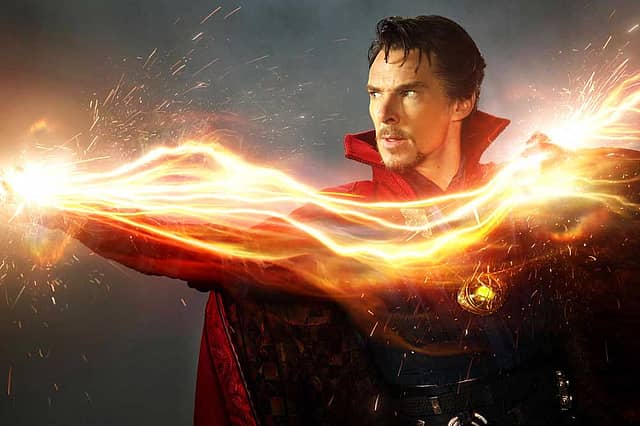Dr Strange Movie Review

In 1956, a strange book called The Third Eye was written in England by a man called Lobsang Rampa. He was apparently a Tibetan, and the book was about himself growing up in a monastery in Tibet, during which time, he wrote, a small hole was drilled into his forehead to trigger his 'third eye', a sixth sense that enabled him to gain extra-sensory perception, through which he was able to see people as they are, and not as they pretend to be. The book became a bestseller, and was followed by a whole series on the same subject.
It turned out that Lobsang Rampa wasn't a Tibetan. He was an Englishman from Devon, a man whose name was Cyril Hoskin. He was the son of a plumber and had never been to Tibet and spoke no Tibetan. When his true identity was discovered, he explained that one day he had fallen off a tree and lost consciousness. When he woke up, a Tibetan monk called Lobsang Rampa came to him and asked permission to occupy his body. Cyril agreed, after which a transmigration of the soul took place and so he, Cyril, was now Lobsang Rampa, and had written all these books about his life as a monk who was in possession of supernatural powers.
The Marvel comic superhero, Dr. Strange, on which this 2016 film is based, was created by Steve Ditko in 1963, and has odd parallels. It is about a brilliant neurosurgeon called Dr. Stephen Strange, who is in a car accident and loses the use of his gifted hands, once capable of pinpoint precision in surgery. He (Benedict Cumberbatch) is devastated by this blow to his professional skills and, after a period of depression, travels to Kathmandu where he meets the 'Ancient One' at a monastery called 'Kamar-Taj'. The 'Ancient One' (Tilda Swinton) teaches him that a person has a physical body and an astral persona, and though Strange will never regain his surgical skills, he has another dimension of his consciousness he can use for the protection of the entire world, not just the single patient he happens to be operating on. The conceptualization of 'Dr. Strange', a man of Western science and Western faith, coming to the end of his tether and seeking a solution in Buddhist thought and religion, is eerily similar to the idea of The Third Eye of Lobsang Rampa.
Wealth Issue 2025
17 Oct 2025 - Vol 04 | Issue 43
Daring to dream - Portraits of young entrepreneurs
What this film adaptation does is to visualize transcendental thinking very well; it creates a prism through which it looks at the world in which we exist – the dimensions of space/time/matter/gravity – and hops out of it, every now and then. Primarily, the film uses 3D very intelligently to give the impression of Dr. Strange exiting our world and then entering one in which the continuum of the physical laws of our universe are temporarily suspended. In this new world, time can be stopped, space can be refigured, matter can be deconstructed and gravity can be neutralized. So basically, Dr. Strange leaves our constraining world, of which his trembling and ineffective surgeon's hands are a part, and enters a world where he has enhanced powers; i.e. he is a superhero.
With the help of Eastern spirituality, Dr. Strange is a neat explanation, both for the need of, and for the working of, the unbelievable powers of superheroes in Western popular culture. The essential text in the library of 'Kamar-Taj' is in Sanskrit and Dr. Strange, with his wonderful memory (he did his MD and PhD simultaneously), reads it from cover to cover. There are a few pages missing in the book, of course, but it doesn't really matter, because despite this he is one step ahead of the villain (Mads Mikkelsen), whose knowledge of spoken and written Sanskrit, apparently, is not as good.
'Dr. Strange' has a few things that many other comic book adaptation movies don't – irony, self deprecating humor and good actors in Cumberbatch and Mikkelsen who can speak the funny lines in the script, with a perfectly straight, superhero and/or villainous face.
